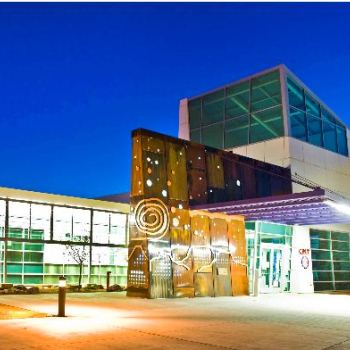Oct 25 2011
Sandia National Laboratories has reduced its water use by 30 percent since 2008 and its energy intensity by more than 8 percent since 2005 in nationally recognized efforts to integrate sustainable planning and design into its operations and facilities.
Three projects aimed at decreasing energy and water use at the national security laboratory have received EStar awards from the U.S. Department of Energy (DOE). These and three additional projects also garnered Pollution Prevention (P2) awards from the National Nuclear Security Administration (NNSA)
The awards recognize achievements by the national laboratories and other sites to reduce the environmental impact of their work, protect natural resources and ensure long-term sustainability. The EStar awards will be presented at a Nov. 3 ceremony in Washington, D.C.
Sandia initiated projects on several fronts; it instituted green building practices; conducted energy audits that reduced consumption by its buildings; maximized the efficiency of its supercomputers; encouraged recycling through workplace volunteers; and reused or recycled old machine tools. The Center for Integrated Nanotechnology is a sustainable facility that maximizes energy and water conservation.
The Center for Integrated Nanotechnology is a sustainable facility that maximizes energy and water conservation.
Sandia received both the EStar and P2 awards for its integrated approach to sustainability and energy efficiency. Sandia conducts energy audits every four years on the top energy-consuming structures to identify the best ways to save energy and water and to plan green building projects, said Jack Mizner, manager of Sandia’s Strategic Corporate Partnership group. Sandia has more than 225 major buildings encompassing more than 7 million square feet of space.
The audits will help Sandia reduce energy intensity by 30 percent from fiscal years 2005 to 2015 and ensure that 15 percent of its buildings mostly new construction and major renovations of more than $5 million meet federal guidelines that include Leadership in Energy and Environment Design (LEED) certification, Mizner said. The new Ion Beam Laboratory that opened in 2010 was the first at Sandia to achieve LEED Gold certification.
“Sustainability is built on the triple bottom line: people, profit and planet. Sustainable practices protect the environment, provide a healthy workplace and are the right way to do business,” he said.
As the audits uncover room for improvements, Sandia is implementing day lighting, solar power, occupancy sensors that turn off lights when an employee leaves a room, modifications to its cooling systems and sustainable landscaping and pest management, said Chris Evans, a systems project engineer who leads Sandia’s resource conservation effort.
For example, software was installed earlier this year to put many computers into standby mode during off hours to save energy, while still making them available to Sandia employees when needed, he said. Each year, the change will save the equivalent amount of energy that a 2,000-square-foot home would use for more than 1,000 years.
The Joint Computational Engineering Laboratory was the first building at Sandia to incorporate sustainable design from the start of the project.
In the high desert of New Mexico, water use is a major concern. The demolition of a centralized steam plant last year and the conversion of buildings to high-efficiency boilers led to a 55 percent reduction in natural gas consumption, as well as savings of 12 million gallons of water a year, Evans said.
Sandia’s water-saving efforts also won both EStar and P2 awards. Water audits showed that about a quarter of Sandia’s water is used for cooling and 35 percent for ultra-pure water, which is needed for certain scientific processes, Evans said.
So Sandia implemented three water-saving systems: a high-efficiency reverse osmosis system; a deionized water recycling system; and system that reclaims water for cooling towers.
When Sandia was being constructed more than 60 years ago, the laboratories reflected the development and building practices of the times urban sprawl and the impacts of an auto-dominated culture weren’t concerns, said Ralph Cipriani, a project manager and planner for Sandia’s sustainability efforts.
“Our long-range plan calls for repositioning the way we do development. Instead of spreading outward, we’re trying to do infill and compact development inward, to use land to its highest potential and create an environment that facilitates walking instead of using cars to save energy, to save time and provide a healthy environment,” Cipriani said.
Sandia also won EStar and P2 awards for maximizing the efficiency and minimizing the effects on the environment of the Red Sky supercomputer. Red Sky uses 40 percent less water than its predecessor, saving 5 million gallons annually. The supercomputer also has seen a tenfold increase its cooling efficiency, from 70 percent to 97 percent, and its carbon footprint was reduced by nearly 78 percent to 223 tons (203 metric tons)compared to its predecessor. For more information:https://share.sandia.gov/news/resources/news_releases/greenawards/